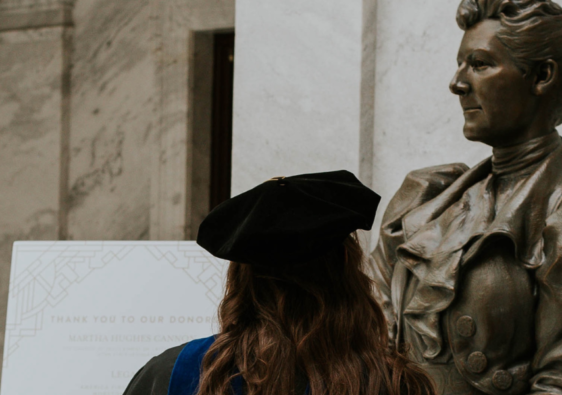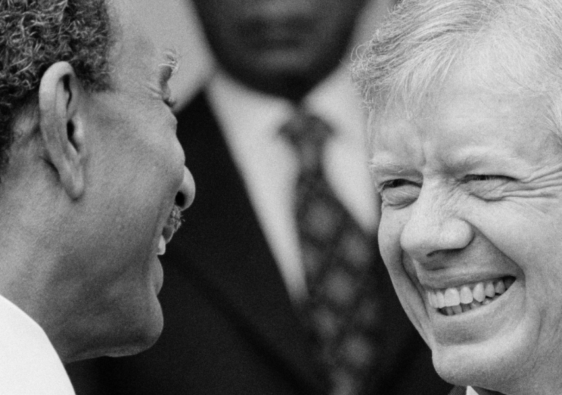Martha Hughes Cannon will have to wait a little longer for her statue to be installed in Statuary Hall.
The installation for the Martha Hughes Cannon statue originally was scheduled for July 24, but has been bumped because Israeli Prime Minister Benjamin Netanyahu will be addressing a joint meeting of Congress on that day. A “joint meeting” is different than a “joint session,” according to the U.S. Senate, a parliamentary difference that has evolved over time. A joint session is more formal and occurs upon the adoption of a concurrent resolution; a joint meeting, such as will occur with Netanyahu, occurs when “each legislative body adopts a unanimous consent agreement to recess to meet with the other legislative body” and no legislative work is done.
The 7-foot-6-inch statue of Martha left the Utah Capitol on June 5. It arrived in Washington on June 14, thanks to CR England. Martha is being stored by the company that partnered with Better Days, a group dedicated to elevating women’s voices, both contemporary and historical, for the installation. They have also been storing the base Martha will stand on. “They are going continue to look after Martha and the base while we wait (to) work with Speaker (Mike) Johnson’s office to select another installation date,” said Erin Wynn, the executive director of the Martha Hughes Cannon Statue Oversight Committee. Johnson’s office told the Deseret News that while a new date for the installation has not been chosen, one will be picked as soon as possible.
Lt. Gov. Deidre Henderson said: “It was the right call not to try to install Martha on the same day that Prime Minister Netanyahu is speaking to a joint (meeting) of Congress. We’re grateful for the support and help from the speaker of the House on finding a new date. We’ve waited four years to get this done. We can wait a few more months so we can get it right.”
Surely, it won’t be as long as the first statue of the mothers of the suffrage movement — they spent 75 years in a broom closet.
Six months after the 19th Amendment, giving women the right to vote, was ratified, and on Susan B. Anthony’s 101st birthday (Feb. 15, 1921), more than 70 women’s organizations gathered with members of Congress to watch the unveiling of a tribute to the Founding Mothers of the suffrage movement: Elizabeth Cady Stanton, Susan B. Anthony and Lucretia Mott — as well as a rough-hewn fourth pillar of marble, meant to represent the women who would continue fighting for women’s rights. Carved by artist Adelaide Johnson at the request of the National Woman’s Party, this statue, named “The Woman Movement,” came with the following gilt inscription: “Woman first denied a soul, then called mindless, now arisen, declaring herself an entity to be reckoned.”
Literally the next day, Congress ordered that the statue be moved to the basement, into the Capitol crypt that was used to store mops and brooms. The “blasphemous” inscription was scraped off on orders from Congress. Congress refused to approve bills that would have let the suffragists out of the locked cellar in 1928, in 1932 and in 1950. The crypt was renovated and opened to the public in 1963. Visitors could see the statue — renamed generically to “The Portrait Monument” — but they couldn’t see the name of the sculptor, or the names of the women the monument portrayed.
It took until 1997 for the statue to reemerge from the basement. When Speaker Newt Gingrich rejected a petition to spend $75,000 to move it (out of his $23 million budget to use for Capitol maintenance and acquisitions), supporters raised the funds themselves from donors around the country. When the statue was moved into the Rotunda, where it remains today, it was the first one depicting real women, rather than an allegorical one.
When fellow suffragist Martha Hughes Cannon takes up her spot in the Capitol’s Visitor Center, she will be one of 14 women out of the 100 statues that now make up Statuary Hall.



